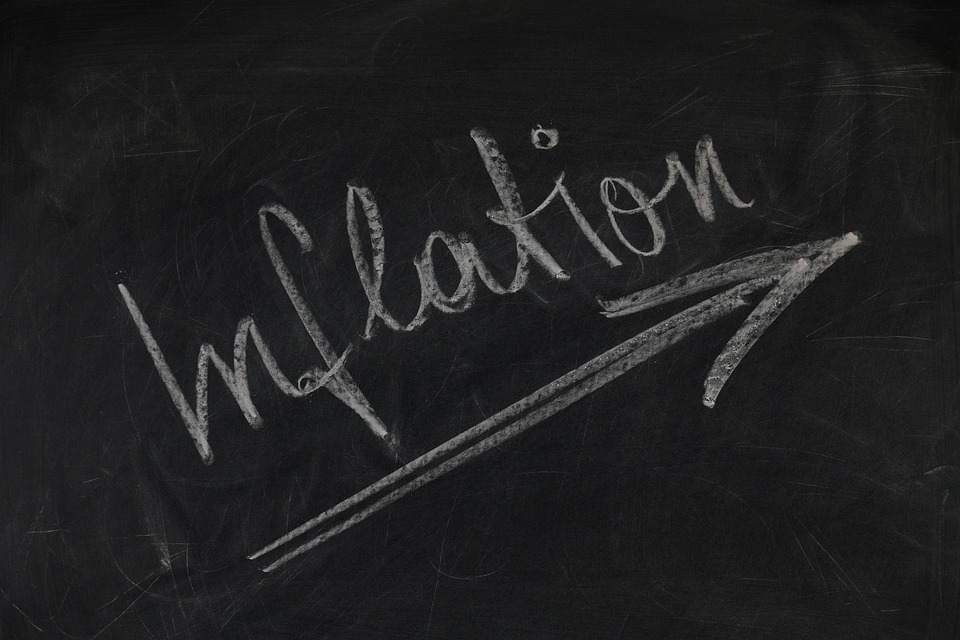Inflation Slowed In July, But Will It Continue Along A Downward Trajectory?

Prices increased year-over-year on a basket of goods and services by 8.5% in July. That figure is lower than the Dow Jones estimate of 8.7% raise YoY.
However, the consumer price index (CPI) rose to 0.2% on a month-to-month (MoM) basis, slowing down the rate of inflation compared to June’s CPI rating and matching the DJ’s MoM estimate. The high YoY inflation rate has helped the gold price surpass the $1800 resistance level for the precious metal once again.
Energy prices fell 4.6% MoM and gasoline dropped 7.7% MoM, helping to slow down the rate of inflation for July.
Despite these hopeful signs, gains of 1.1% MoM for food and 0.5% for shelter costs are still hurting consumers' budgets.
Core CPI (which excludes energy and food prices) rose 5.9% YoY and 0.3% MoM.
Wholesale Inflation Rate Also Fell in July
The producer price index (PPI), which calculates wholesale prices, slowed down in July.
The PPI dropped 0.5% month-over-month (MoM), but still stands at 9.8% year-over-year (YoY).
The decline was due to a significant 9% drop in energy prices and influenced 80% of the total drop in goods prices - which fell by 1.8%.
PPI increased by 0.2% in July MoM and 5.8% YoY, excluding energy, food, and trade services.
The lower-than-expected CPI and PPI figures have elated some investors, leading to a stock market rally. Some investors advise caution though, believing that gas prices dropped due to a release of US strategic oil reserves that are soon to be depleted. This may lead to a drop in supply over the next couple of months and a spike in prices.
The positive inflation report has also led many investors to speculate about the Federal Reserve’s next policy moves, with some anticipating that the fed will return to a “dovish”monetary strategy.
Although Inflation is Slowing, the US Misery Index Recently Hit its Highest Level in 11 Years
Although inflation slowed in July, the US economy still faces a variety of issues, such as contracting GDP, increased layoffs, and high inflation. This economic problem is negatively affecting Americans, leading to the highest spike in the misery index in 11 years.
The misery index is a measure of economic distress felt by households due to a rising cost of living amid unemployment fears. The misery index is computed by combining the unemployment rate with the inflation rate.
The latest misery index data released for June rose by 12.5% month-over-month, which is higher than during the 2007-2009 recession when the index hit 11.4%.
Consumer sentiment continues to crater as the misery index increases, proving to many economists that the US is in a recession and American households are feeling the negative consequences of a shrinking economy.
Nonfarm Payrolls Grew 528,000 in July, More than Expected but Cooling Down
The Bureau of Labor Statistics reported that nonfarm payrolls rose 528,000 in July. This exceeded the Dow Jones expected estimates of 258,000. The unemployment rate was recorded at 3.5% for the same period.
Wage growth also jumped, as average hourly earnings surged 0.5% month-over-month (MoM) and 5.2% year-over-year (YoY), also higher than estimates.
As a result of the positive reports, it is rumored that the Fed will raise interest rates in September.
Alternatively, some economists believe that the current job figures are deceiving. They highlighted the fact that the labor participation rate is a paltry 62.2% in June. Many economists and investors argue that labor participation highlights a greater issue within the economy.
As the cost of living soars, many retirees are pushed back into the workforce as their incomes are diminished by high inflation.
Another recession indicator is flashing red.
Shipping Company Warns of Slowing Demand
Maersk, a Danish shipping company, warns of a tightening demand for goods as it witnesses warehouses filling up to capacity. The shipping company anticipates a deceleration in global shipping container demand as a result of lower consumer confidence.
The company filled 7.4% fewer shipping containers on vessels for the second quarter of 2022 year-over-year.
Maersk's data is viewed as a barometer for international trade by economists and investors alike.
The conjunction of growing international geopolitical conflicts and China’s Covid-19 lockdowns exacerbated the situation, creating worsening bottlenecks internationally.
While many investors believe that this drop in demand might alleviate inflation temporarily, they worry it will lower global GDP even further.
Conclusion
As you can see, there are many economic indicators that point to a struggling US economic environment. Even though inflation numbers have eased month-over-month for July, year-over-year prices are still up 8.5%. This is significant considering that Americans have depleted their savings and taken on massive debt to make ends meet.
After a week of better-than-expected inflation data, do you believe that prices will continue along a downward trajectory? Or will prices increase as we head into the winter season?
More By This Author:
A Shift In Expectations For The Next Fed IncreaseHome Depot, Lowe’s On Track To Grow 2022 Earnings
These Were The Five Best And Worst Performing Mid-Cap Stocks In H1 2022
Disclaimer: This article is not an investment recommendation, Please see our disclaimer - Get our 10 ...
more


